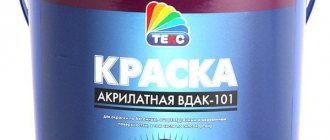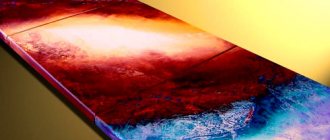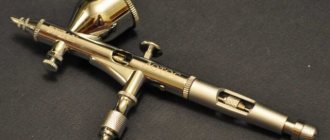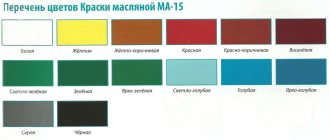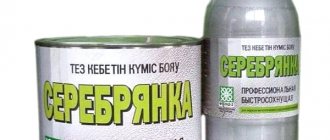Types of waterborne paints
Water-based paints are among the most environmentally friendly, high-quality, economical, and therefore the most common construction paints.
The share of their consumption reaches 70 - 80%. Based on the type of binder, water-based paints of the latest generations are divided into several classes:
- paints based on aqueous dispersion of acrylic resins (acrylic latex paints);
- based paints (silicate paints);
- paints based on aqueous dispersion of silicone resins (silicone paints);
- mineral paints based on cement (cement paints) and slaked lime (lime paints).
Table 1. Requirements and standards for paints according to GOST 28196-89.
| Indicator name | Standard for brands | Test method | ||||||
| VD-VA-224 | VD-KCH-26A | VD-KCH-26 | VD-AK-111 | VD-AK-111r | VD-KCH-183 | VD-KCH-577 | ||
| OKP 23 1611 1001 | OKP 23 1621 0201 | OKP 23 1621 0101 | OKP 23 1631 0101 | OKP 23 1632 0243 | OKP 23 1621 0401 | OKP 23 1621 0500 | ||
| 1. Paint film color: | Must be within the permissible deviations established by the “Card Index” color samples (standards) or control color samples | According to clause 4.3 | ||||||
| white | Must be within the permissible deviations established by control samples | — | Must be within the permissible deviations established by control samples | |||||
| pale pistachio | — | — | — | — | 345, 346 | — | ||
| 2. Appearance of the film | After drying, the paint should form a film with a smooth, uniform matte surface. | According to clause 4.3 | ||||||
| 3. Mass fraction of non-volatile substances, % | 53 — 59 | 52 — 57 | 56 — 61 | 52 — 57 | 47 — 52 | 52 — 57 | 55 — 60 | According to GOST 17537 and clause 4.4 of this standard |
| 4. Paint pH | 6,8 — 8,2 | Not less than 9.0 | Not less than 9.0 | 8,0 — 9,0 | 7,5 — 9,5 | Not less than 8.0 | Not less than 6.5 | According to clause 4.5 |
| 5. Covering power of the dried film, g/m2, no more | 120 | 140 | 210 | 100 | 80 | 120 | 180 | According to GOST 8784, section. 1, 2 and clause 4.6 of this standard |
| 6. Resistance of the film to the static effects of water, at a temperature of (20 ± 2) °C, h, not less | 12 | — | — | 24 | 24 | 24 | — | According to GOST 9.403, method A and clause 4.7 of this standard |
| 7. Frost resistance of paint, cycles, not less | 5 | 5 | 5 | 5 | 5 | 5 | 5 | According to clause 4.8 |
| 8. Conditional light fastness (change in diffusion reflection coefficient), %, no more | — | — | — | 5 | 5 | 5 | — | According to GOST 21903, method 2 and clause 4.9 of this standard |
| 9. Degree of grinding, microns, no more | 30 | 70 | 70 | 60 | 60 | 60 | 60 | According to GOST 6589 |
| 10. Drying time to degree 3 at a temperature of (20 ± 2) °C, h, no more | 1 | 1 | 1 | 1 | 1 | 1 | 1 | According to GOST 19007 |
Table 2. Maximum permissible concentrations and hazard class of vapors of monomers and paint components according to GOST 28196-89.
| Component name | Maximum permissible concentration, mg/m2 | Hazard Class | ||
| in the air of the working area of the production premises | in the water of reservoirs | in the atmosphere | ||
| Polyvinyl acetate dispersion: | ||||
| on vinyl acetate | 10 | 0,2 | 0,15 | 3 |
| by acetaldehyde | 5 | 0,2 | 0,01 | 3 |
| on dibutyl phthalate | 0,5 | 0,2 | — | 2 |
| Latex butadiene nitrile: | ||||
| for acrylonitrile | 0,5 | 2,0 | 0,03 | 2 |
| Styrene-butadiene latex: | ||||
| for styrene | 30/10 | 0,1 | 0,003 | 3 |
| Emulsion MBM-5s: | ||||
| by methyl methacrylate | 10 | 0,01 | 0,1 | 3 |
| for butalacrylate | 10 | 0,01 | — | 3 |
| for methacrylic acid | 10 | 1,0 | — | 3 |
| Ethylene glycol | 5 | 1,0 | — | 3 |
| Thiuram: (tetramethylthiuram disulfide) | 0,5 | 1,0 | 0,006 | 2 |
| Aerosil | 1,0 | — | — | 3 |
| Pentachlorophenolate | 0,1 | 5,0 | 0,001 | 1 |
| White Spirit | 300 | — | — | 4 |
| Titanium dioxide | 10 | — | — | 4 |
How to paint walls with water-based paint
To know how to paint walls with water-based paint, you need to familiarize yourself not only with the technology of its application, but also with the procedure for preparing the surfaces to be decorated for it. If you strictly follow all the rules, you can see from your own example that there is nothing overly complicated in this process.
How to paint walls with water-based paint
Despite the appearance on the market of numerous innovative finishing materials, wall painting has been and remains the most relevant for modern office premises and for living rooms in apartments and private houses.
Water-based paint is attractive because it is water-based and does not emit an unpleasant odor when painting. At the same time, it is distinguished by excellent decorative properties - as a result of painting, a pleasant soft matte surface texture is obtained. In addition, with the help of this type of paint you can create various patterns on the walls that imitate relief, or you can come up with a special texture using auxiliary elements for this. Typically, this method is used in cases where the wall has irregularities and there is no way to correct them. Ideal, even painting is achieved if the wall is well cleaned and leveled, so all work begins with preparing the walls.
Before starting any painting work, it is necessary to prepare the work space, as well as tools and accessories, including protective equipment.
Tools and materials for work
To carry out the work you need to prepare the following tools:
- A construction mixer, but in this case a regular drill with a mixing attachment may be sufficient. This will be enough to mix the paint.
Mixer for paint and for mixing repair putty compounds
- Painting tray - for the convenience of dipping the roller into paint and in order to maximize material savings.
Paint tray and roller
- A roller with medium length pile and a long handle - for easy painting of walls under the ceiling without the use of additional stepladders or sawhorses.
The main tools of a painter are rollers, brushes
- Brushes of different widths - for applying paint in places inaccessible to a roller.
Grater - a tool for leveling the wall surface
- A grater for cleaning walls from old coating and sanding them.
- Spatulas, brushes or a stiff sponge - for cleaning surfaces.
- Wide spatula for leveling walls with putty.
Some tools and devices are made independently
- If the paint is applied either with a relief pattern or its imitation, then additional tools or homemade elements will be needed to help create the desired texture.
Materials for painting walls
It is necessary to prepare in advance the materials that are impossible to do without when painting:
The main material is high-quality water-based paint
- Water-based paint. It can immediately have a certain color or be white. In the latter case, you will need a dye that will allow you to select the desired shade of paint. It is recommended to do the mixing yourself, as it becomes possible to paint the walls in a slightly different tone. For example, the walls in which window units are installed are illuminated less than other surfaces in the room, so you can prepare paint for them that is a lighter tone.
Dyes are available in a very wide range of shades
- Dye of the chosen color.
High-quality painting is impossible without thorough priming of the walls
- A primer for walls that will prevent mold stains from appearing on walls and create conditions for good adhesion of paint to surfaces.
- Sandpaper for cleaning and sanding the surface.
- Putty, rough - for repairs and finishing - for final leveling of walls.
- Polyethylene film - to protect surfaces that will not be painted from accidental drops of paint.
Very often when working you need masking tape
- Masking tape, for attaching protective film to walls and floors, for fencing off painting areas - if necessary.
- In addition, you need to prepare work clothes and skin and respiratory protection - a suitable suit, a respirator or mask, rubber and fabric gloves.
We should dwell in a little more detail on the choice of paint, or rather, on the criteria that predetermine it when purchasing.
Paint Selection Options
The water emulsion is not at all the same - you need to be able to choose it
Water-based and water-dispersion paints are perhaps the best option for decorative painting of wall and ceiling surfaces in residential premises. This is due to a number of positive qualities of such compositions:
- Such paint is an environmentally friendly product that does not harm human health.
- When working with these paints, there is no sharp unpleasant odor in the room, so work can be carried out even with the windows closed.
- Water-based compositions provide a smooth matte surface - which opens up wide scope for the implementation of a wide variety of design projects.
- The sufficiently high moisture permeability of the paint allows it to be used for decorating walls in rooms with high humidity, if the surface is properly prepared.
The most popular are aqueous emulsions that are made using acrylic resins. They provide the paint with maximum elasticity and strength, but such compositions have a fairly significant cost. Therefore, you can choose compositions that are affordable, but also include acrylic components - these are vinyl acrylic and styrene acrylic paints.
If the paint contains latex, then after drying the surface acquires water-repellent properties. This coating can withstand about a thousand wash cycles.
The water-dispersion version of the paint is somewhat different from the water emulsion. This primarily concerns the main components, which include styrene copolymers, polyacrylates, and polyvinyl acetates. These components do not dissolve in water. When paint is applied to a surface, as it dries, water evaporates, and insoluble components polymerize on the wall to form a paint film.
Both water-based paint compositions include pigments - titanium dioxide or zinc oxide are most often used in this capacity - they are introduced to obtain a perfectly white color. In inexpensive paint compositions, instead of these coloring pigments, a chalky component is added, which, in addition, serves as a filler.
When purchasing coloring compositions, you need to pay attention to their characteristics, such as drying time, emulsion viscosity, its consumption, shelf life, storage conditions, specific gravity and others.
- The drying time of the applied paint ranges from 2.5 to 24 hours, and this parameter depends on the humidity and temperature in the room. Ideal conditions for painting work: surface temperature of the surface to be painted +18–20 degrees, relative air humidity - 60-65%.
- The viscosity of a composition is an indicator of the degree to which it is diluted with water. A similar parameter is measured with a viscometer. The simplest viscometer is a funnel of a strictly defined volume with a calibrated drain hole. And the viscosity indicator is measured in seconds - how long it takes for all the paint to completely flow out. Such a device is often available to professional painters; fortunately, it is inexpensive. But data on the viscosity of the composition must be indicated on the packaging. Typically, when applying paint using a roller or brush, a viscosity of 45-50 s is required, and when using a spray gun - no higher than 20-25 s.
- Paint consumption per square meter of area, covered in one layer, is 170? 200 ml. This parameter depends on the surface on which the paint is applied - its looseness and absorbency.
- The shelf life of water-based paint is almost always two years from the date of manufacture, subject to proper storage conditions. These conditions include the room temperature, which should not be negative, but the paintwork should not be allowed to overheat - the paint should be stored in a cool room with an even temperature
- The specific gravity of one liter of paint is approximately 1.3 kg.
The main technical characteristics of aqueous emulsions established by GOST are given in the following table.
| Indicator name | VD-VA-224 | VD-AK-111 | VD-AK-111r | VD-KCH-183 |
| paint pH | 6,8 — 8,2 | 8,0 — 9,0 | 7,5 — 9,5 | from 8.0 |
| Residual mass of non-volatile substances, % | 53 — 59 | 52 — 57 | 47 — 52 | 52 — 57 |
| Covering ability of the dried film, g/m2 | 120 | 100 | 80 | 120 |
| Frost resistance of the composition, number of cycles | 5 | 5 | 5 | 5 |
| Resistance to static effects of water, at a temperature of (20 ± 2) °C, hours | 12 | 24 | 24 | 24 |
| Degree of grinding, microns | 30 | 60 | 60 | 60 |
| Drying time (20 ± 2) °С, hours | 1 | 1 | 1 | 1 |
| Conditional light fastness, % | — | 5 | 5 | 5 |
Water-based compositions are easily applied to a prepared surface, but they cannot be used to paint walls previously coated with oil paint or a glossy surface. The walls, previously covered with a water emulsion, will be covered with paint made on any base.
Water-based paint can, in principle, be applied to any surface except metal, as it can provoke corrosion processes.
Surface preparation
In order for the paint to adhere well, the surface needs careful preparation.
Since the surface of the walls is almost never perfectly smooth, and moreover, most often there is already some kind of old coating on it, it first needs to be brought into proper condition, suitable for painting.
Before starting work, polyethylene film is laid on floors and other surfaces that will not be cleaned or painted. It needs to be secured to the baseboards using masking tape. By using this method of protection, you can subsequently save yourself from labor-intensive cleaning and preserve the decorative floor covering in its original condition.
Wall cleaning
There is no point in applying paint to uncleaned walls.
- First you need to remove the old decorative covering from the walls. This process can be carried out using a stiff brush or sponge if the wall, for example, was covered with whitewash.
Removing old layers of whitewash and paint
The surface is moistened with water, the remaining whitewash is cleaned off with spatulas, brushes, and if it gets wet easily, it is simply washed off using a sponge and soft cloth.
Washing off old whitewash
- If the surface is painted with oil paint, then it can be cleaned using a hair dryer - this is a long and labor-intensive process, especially if the wall is painted with a thin layer. You can go in other ways, for example, in such a situation there are two options - cover the walls with plasterboard, or make notches on them and re-plaster them, creating a smooth surface.
Sometimes only a hair dryer can remove old paint
If there are many layers of paint on the wall, and it has begun to come off in places, you will have to clean it off by heating it with a hairdryer and picking it up with a spatula or scraper.
Sealing cracks
- After cleaning the walls, it is necessary to carry out a thorough inspection of them to detect any cracks or unstable areas. If they are not repaired before puttying and painting, they will definitely appear on the already renovated wall.
The cracks must be carefully sealed
- Detected cracks need to be widened so that the repair composition penetrates as deeply as possible into the thickness of the wall.
You can use ready-made polymer repair compounds
- The cracks are widened using a spatula or a grinder with a stone wheel. Then they are thoroughly cleaned, coated with a deep penetration primer and left to dry for the time specified in the instructions (usually from 4 to 6 hours).
- After drying, the cracks are sealed with putty or one of the polymer materials, for example, silicone sealant or “liquid nails.”
- When sealing cracks, you need to try to remove all excess material from the wall surface so that the “patch” is flush with the wall surface.
- After the repair composition has completely dried, all walls are primed and dried. If the wall is not level enough, it is then leveled with putty, which can be purchased in a paste form or in a dry mixture.
Puttying walls
Puttying walls before painting
Whatever putty is used to level the walls, it must be well prepared and brought to the required consistency. A drill with a mixer attachment will help with this. The resulting mass must be completely homogeneous, otherwise it will not make the surface smooth.
- The prepared composition is taken from the bucket with a medium-sized spatula or trowel and spread on the edge of a wide spatula. With its help, the leveling mass is applied to the wall with smooth movements. The material can be applied to the surface from the ceiling, floor or from a corner, the main thing is that the mixture should be distributed in an even layer. All stripes and other imperfections remaining from the corners of the instrument are immediately smoothed out.
The putty is applied in a thin layer and smoothed thoroughly
- After the walls are puttied, they are left to dry. This process will take place quite quickly, since the layer of material should be very small, only 2? 3mm.
Direction of movement of the trowel when leveling the surface
- If the putty has applied successfully, the next step will be to grout it using a trowel. If necessary, you can apply a second, finishing layer on top of the first layer, and after drying, proceed to the final grouting.
- Grouting is done with light circular movements counterclockwise until the surface is perfectly smooth.
- After completing this work and achieving the desired result, it would be a good idea to thoroughly vacuum the walls to remove putty dust, but so as not to leave accidental scratches with the vacuum cleaner brush.
Priming walls before painting
- Next, a primer is applied to all prepared surfaces, which should be given 5? 6 hours for complete absorption into the walls and drying. The primer can be white or transparent. It is best to apply it with a roller, but you can also use a wide brush, especially in hard-to-reach areas (in corners or in places where pipes pass, etc.)
Then you can move on to preparing the paint.
Paint preparation and color selection
One of the difficult moments is choosing the right color
When you open a can of paint, you can see that its consistency is usually quite thick. A composition of this viscosity is well suited for creating relief wall paintings, but for painting it is still a bit thick. Therefore, after intensive mixing of the emulsion, it can be slightly diluted with water to the desired state.
- water is added in very small portions to prevent excessive dilution to the point that it is unsuitable for painting vertical surfaces.
- Using different colors and shades of water emulsion, you can create amazing room interiors. However, in order to bring your plans to life, you will have to “conjure” the white paint by adding the selected color to it, and the more you add, the brighter the paint will turn out.
Mixing paint
The color is added gradually, and after each addition the paint is thoroughly mixed.
- In order to get the same color for all surfaces of the room, you need to immediately determine how much color is added to each can or bucket of paint of a strictly defined volume. Better yet, prepare immediately enough paint of the desired color to cover all surfaces of the room.
The only deviation that is recommended is to cover the wall on which the window is located with a paint that is one or two shades lighter than the other three walls. This combination will visually expand the space of the room.
- It would be a good idea to leave some of the manufactured paint in reserve, so that if the walls are worn in some places, they can be restored to their proper form. Preparing exactly the same color later is a very difficult task.
- If the project will use several colors of paint in a room, then you cannot do without masking tape. It highlights a separate part of the wall, which is painted in one color. After this area has completely dried, the tape is pasted on the other side of the border, and the second selected color is applied next to it, and so on. Even quite complex mosaic designs are made in this way.
Video: tips for tinting water-based paint
Painting the walls
- Water-based paint is applied in two? three layers, depending on the degree of absorption of the surface. To reduce this absorption capacity, the walls must be very well primed, as mentioned above.
Paint is applied to the walls in an even layer
- The prepared paint is poured in a small amount into a clean tray, from which it is convenient to pick it up with either a brush or a roller. In addition, the ribbed surface of this paint bath helps to save material, since the paint that is excessively taken onto a roller or brush is easily squeezed out on it.
- The roller is dipped in paint and rolled in it so that its entire “coat” is evenly saturated with the composition. It is better to make the first stroke with a roller on a sheet of cardboard. If it is clear that the roller is well soaked, then you can install a long handle in it and begin to paint the wall, starting from the top. The smudges formed in this case, falling on the unpainted bottom of the wall, will be compared and rolled out with a roller during the work.
Large areas are covered with a roller, and corners or areas inaccessible to penetration are painted with a brush.
A relief pattern can be applied to the roller, which is transferred to the surface of the walls
- Painting the wall should be carried out in two or three layers, always after each of them has dried - only then will you get a uniform paint coating.
- While the coating is drying, it is necessary to protect the room from drafts, as they can spoil the evenness of the walls, due to the fact that areas will dry unevenly under such conditions.
- On a flat and dry surface of painted walls, often through a stencil or using a special attachment on a roller, designs can be applied in a different color of paint. This decor can liven up a boring plain wall.
An interesting texture to the surface can be given with the help of simple devices - a sponge, homemade rollers, crumpled polyethylene, etc.
- Another option for creating visual texture would be to apply a different tone of paint to the dried surface using a sponge, compressed plastic film or other homemade devices.
— The first layer of coating the textured surface is made with a base color. This layer should paint the entire plane perfectly evenly. In this case, you can use a spray bottle to cover the base layer - it will help the paint penetrate into all the deepest places of the relief.
— Next, take paint two or three shades lighter than the base color, and preferably a much thicker consistency. It is applied onto a clean roller, which without pressure is applied only over the top layer of the textured pattern. This must be done very carefully, as the first base layer can be damaged and labor-intensive adjustments will have to be made.
Video: an interesting technique for applying a textured pattern
When choosing a textured type of painting, you need to take into account that almost twice as much paint will be required, since the top textured or top layers will be applied with a thick, undiluted paint composition.
The work of painting walls can be called creative, since with the help of water-based compositions you can create works of art - you just need to turn on your imagination and imagine the room in its final form.
If you don’t have any ideas, then you just need to choose a color that suits all the residents of the house and get to work.
Painting a finished, flat surface is not difficult; the main thing is to make the walls smooth, but this is a rather labor-intensive process. The creative part of decorating the room will be easy, since the matter will be completed and you will receive an updated interior created by yourself. Video: how to paint walls with water-based paint
Acrylic latex paints
Acrylic latex paints make up the lion's share of all waterborne paints. Among them, due to their cost-effectiveness, the most widely used are paints based on acrylic copolymers - with vinyl acrylic, styrene acrylic, acrylic silicone and other film formers. Paints based on pure acrylates, which have improved performance characteristics, but also a higher price, are used much less frequently.
To obtain a high-quality finish, acrylic latex paints are usually applied in two layers.
In this case, the coating turns out to be quite elastic and is able to bridge cracks in the base up to 1 mm wide.
The vapor permeability of acrylic latex paints is low compared to other water-borne paints (with a film thickness of 200 microns - approximately 0.0003 mg/(m h Pa). Paints based on organosilicon copolymers of acrylic have the highest vapor permeability - 2-3 times higher than paints based on other acrylic copolymers.
An important property of acrylic paints is the low permeability of the coating to CO2.
Therefore, they quite successfully protect reinforced concrete from corrosion. It must be remembered that acrylic paints can be applied to alkaline substrates (concrete, plasters, etc.) no earlier than 30 days after completion of installation work. For earlier painting, only silicone paints can be used (see below), but it is necessary to calculate the economic feasibility, since they are significantly more expensive than acrylic paints.
The technological and operational properties of acrylic latex paints largely depend on the content of the binder. In fairly high-quality paints, the binder makes up at least 15% of the volume, and in the highest class paints it reaches 40% or more. But at the same time, it should be borne in mind that the higher the percentage of binder, the lower the vapor permeability of the resulting coating.
Another very important indicator - dry residue - for high-quality acrylic latex paints should not be less than 45-50% by volume.
Both of these indicators significantly affect the price of paint. Cheap latex paints (below $2/kg) have high consumption (kg/m2) and low durability, so their use is not economically justified.
So, if it is necessary to create a sufficiently high-quality, stain-resistant coating that does not have high requirements for vapor permeability, then the use of acrylic paint is most advisable. If the coating has high requirements for vapor permeability (for example, painting buildings with poor waterproofing of foundations), it is advisable to use paint from a mixture of acrylic copolymers with a dispersion of silicone resins. In these cases, silicate or silicone paints are also used.
Silicate paints
Silicate paints are mineral paints. A small amount of polymer (less than 5%) ensures they are stable during storage and can be used in a one-component version.
Silicate paint adheres to the substrate using a two-step chemical reaction.
- In the first stage, the binder—liquid potassium glass—reacts with carbon dioxide in the air, forming silica gel.
- In the second stage, the silica gel bonds to the stone base through a chemical reaction.
To equalize the absorbency of the base under silicate paint, use a silicate primer also based on liquid potassium glass.
Silicate paints are used exclusively for painting mineral surfaces, for example, mineral plasters, as well as surfaces previously painted with lime, cement or silicate paint. As for polymer materials, they prevent the adhesion of liquid potassium glass to the base and, therefore, worsen the adhesion of silicate paint. Therefore, surfaces previously painted with acrylic or alkyd paints are first cleaned of traces of previously applied coatings.
Most polymer paints are also difficult to compatible with silicate paints.
Therefore, buildings painted with silicate paints are extremely difficult to repaint with other paints.
Silicate paints contain 5–10% alkali, so working with them requires certain precautions. If they come into contact with eyes or skin, they may cause inflammation. In addition, glass, ceramic, stone and metal surfaces that are not to be painted should be protected from splashes as the paint binder may corrode them. Silicate paints are used only with special alkali-resistant pigments, so their color range is limited.
Compared to acrylic paints, silicate paints are less elastic and do not cover small cracks in the base. In addition, they are less water resistant, so during heavy rains they can leak water into the walls. However, silicate paints have such high vapor permeability that after rain, water evaporates from the walls very quickly.
Due to their high vapor permeability, silicate paints are often used to paint old buildings whose walls are poorly protected from rising groundwater.
Silicate paints are also a very smart choice for painting walls that are exposed to increased moisture from inside the building.
An important property of silicate paints is that they do not support the development of microorganisms and therefore do not require special additives.
DIY water-based paint
Today, many people have certain secrets on how to make water emulsion with their own hands.
To do this, you only need the following tools:
- glue,
- chalk or lime,
- water,
- dye.
Depending on the proportion of the components, you can create a thick or liquid material for decoration.
Color is used as a dye. It has a rich pigment composition. By adding it to the mixture of the main components, it is possible to adjust the intensity of the resulting shade for painting various surfaces.
Silicone paints
Silicone paints are paints in which the binding agent is emulsified silicone resins. They belong to the latest generation of paints, combining almost all the best properties of acrylic and silicate paints. First of all, this concerns vapor permeability, which for silicone paints is approximately the same as for silicate paints. However, unlike silicate paints, they form a non-water-wetted surface on which rainwater remains in drops without wetting the base.
The film formed by silicone paints does not cause surface stress on the substrate, which is especially important when painting plastered surfaces. Unlike acrylic polymers, silicone resins are not thermoplastic, meaning they do not soften when temperature increases. Combined with high water-repellent properties, this means that the surface painted with silicone paints is practically not contaminated.
Silicone paints are good at transmitting not only steam, but also CO2. Therefore, unlike acrylic paints, they do not protect reinforced concrete from corrosion.
Silicone paints are suitable for almost all types of mineral surfaces. They are also highly compatible with both mineral and acrylic latex paints. It is believed that even old silicate coatings can be repainted with silicone paints.
Silicone paints have the highest elasticity - they can bridge cracks in the base up to 2 mm wide. The most important difference between silicone paints and acrylic paints is their resistance to alkalis. If, as mentioned above, acrylic paints can be applied to alkaline substrates no earlier than after 30 days, then silicone paints can be applied after 48 hours.
Silicone coatings, like silicate ones, do not support the development of microorganisms. Therefore, they do not require the use of special fungicidal and algicidal additives.
Working with silicone paints requires virtually no precautions - unlike silicate paints, they are not aggressive.
Silicone resins are known to mix well with acrylic copolymers. Therefore, silicone resins are often added to acrylic latex paints to improve their properties. But, of course, paints based on pure silicone resins have the highest consumer properties.
So, silicone paints currently have the best decorative and performance properties of coatings. The only drawback limiting their use is their high cost. Therefore, they are used mainly in cases where it is necessary to emphasize the artistic and aesthetic significance of a building and its prestige.
Application of water-based paint
In the modern world, water-based paint is very often used. It differs in that it has a fairly low consumption per square meter. The consumption of water-based paint is from 100 to 200 grams per square meter. The amount of paint consumed is determined by the thickness of the applied layer.
Water-based paint is used for finishing work. Due to the fact that pigments can be added to paint, compositions of various colors can be obtained.
The paint is used for application to walls and ceilings indoors. In some cases, it is indispensable when carrying out finishing work in the area of building facades.
Before use, the paint must be prepared. To do this, you need to shake it well so that all the components are thoroughly mixed. If the instructions suggest diluting it with water, then this must be done. Only in this case will the paint lie in an even and neat layer.
To apply paint, you need to prepare the surface. It is best to cover it with a layer of primer so that the surface is even.
The cost of water-based paint today varies depending on the manufacturer. It can average 400 rubles per liter.
Mineral paints
Mineral paints (cement and lime) are used much less frequently than paints of the other listed types.
Cement paints form coatings with high vapor permeability and water resistance. They are most suitable for painting concrete and brick surfaces that are exposed to moisture levels that other paints and coatings cannot withstand.
The primary area of application for lime paints is old buildings plastered with lime or lime-cement plaster. However, it should be borne in mind that the color range of lime paints is usually limited to light tones. In addition, lime paints are not resistant to sulfur compounds typically found in urban air.
